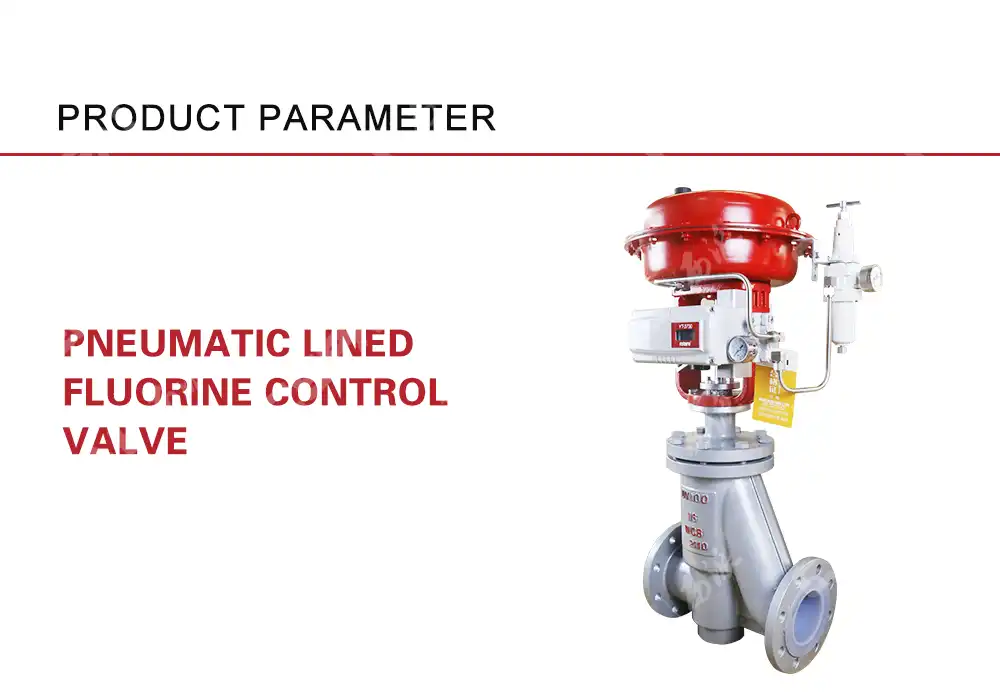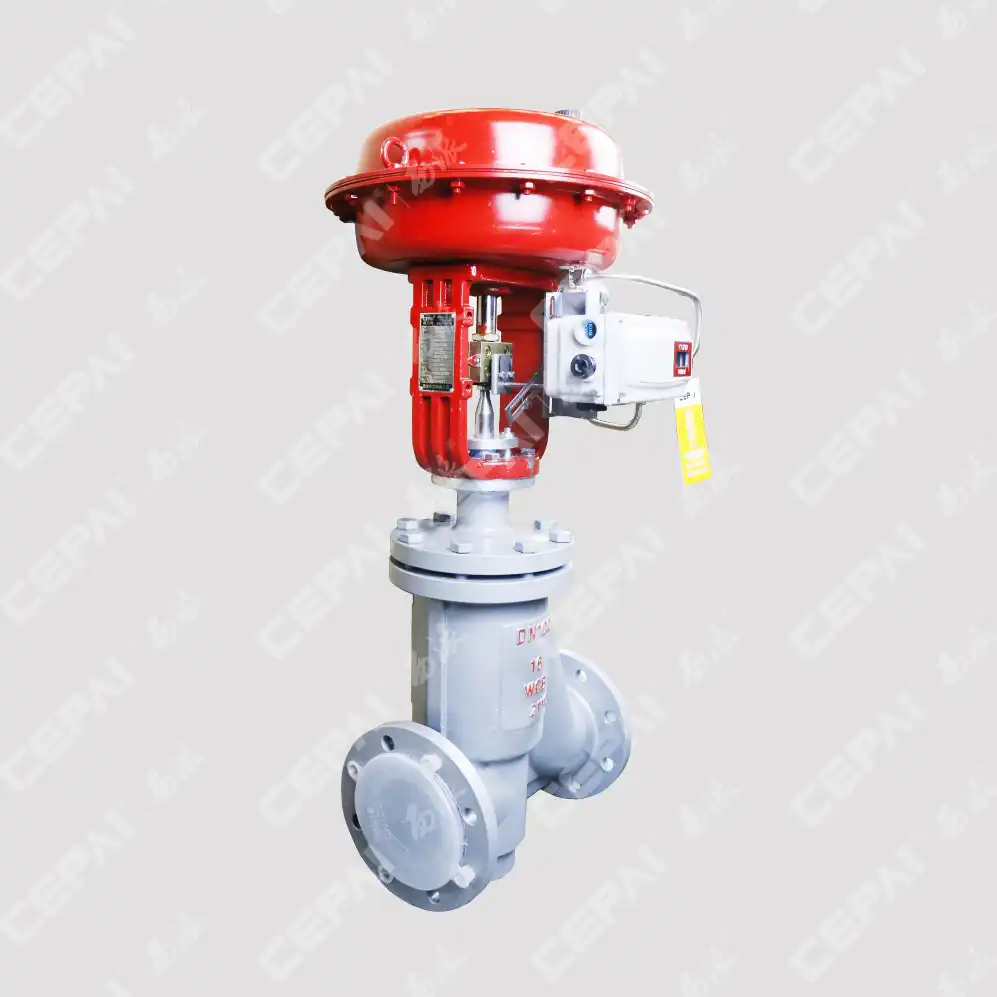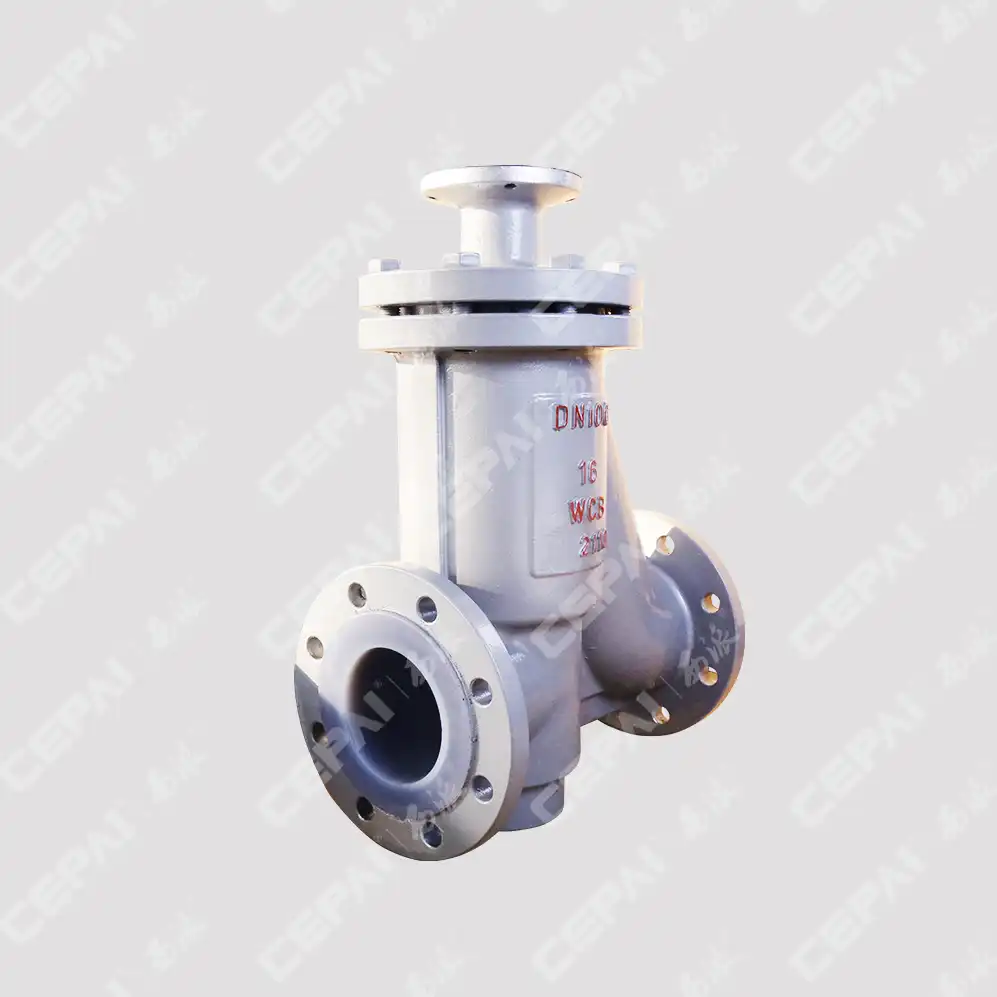How Energy Efficient Control Valves Cut Operational Costs?
In today's competitive industrial landscape, energy efficiency has become a critical factor in maintaining operational profitability. Energy efficient control valves represent one of the most impactful investments companies can make to significantly reduce operational costs across various applications. These specialized control valves are designed to optimize flow regulation while minimizing energy consumption, resulting in substantial savings over time. By implementing advanced control valve technologies, industries can achieve precise process control while simultaneously reducing energy waste, maintenance requirements, and overall operational expenditures.

The Engineering Behind Energy Efficient Control Valves
Advanced Material Technology Minimizes Friction and Wear
Energy efficient control valves incorporate cutting-edge material science to dramatically reduce friction and wear during operation. These advanced materials, such as ceramic-coated surfaces and specialized alloys, create smoother contact surfaces that require less force to actuate, directly translating to energy savings. For instance, high-performance control valves with ceramic trim components can reduce the friction coefficient by up to 40% compared to traditional materials. This reduction in friction not only decreases the energy required for valve operation but also extends the valve's operational lifespan by minimizing wear patterns that typically develop in conventional valve designs. Additionally, these advanced materials exhibit superior resistance to erosion, corrosion, and cavitation damage, allowing the control valves to maintain their energy-efficient performance characteristics even when handling abrasive or corrosive media. The implementation of these specialized materials represents a significant advancement in valve technology, delivering both immediate energy savings and long-term operational benefits through extended service intervals and reduced replacement frequency.
Optimized Flow Path Design Reduces Pressure Drops
The internal geometry of energy efficient control valves is meticulously engineered to minimize pressure drops and turbulence, which are primary sources of energy waste in fluid systems. Traditional control valves often create significant restrictions that require additional pumping power to overcome, whereas modern energy efficient designs feature streamlined flow paths specifically calculated to reduce these inefficiencies. Advanced computational fluid dynamics (CFD) modeling allows valve manufacturers to precisely engineer internal passages that maintain laminar flow patterns even at high throughput rates. By reducing pressure drops across the valve by as much as 30-50% compared to conventional designs, these optimized control valves significantly decrease the energy demand on pumps and compressors throughout the system. This reduction in required pumping energy directly translates to lower electricity consumption and reduced operational costs. Furthermore, the improved flow characteristics provide more precise control capabilities, allowing for tighter process regulation that can prevent waste from off-specification production. The combination of reduced energy requirements and improved process control makes these flow-optimized control valves particularly valuable in high-throughput applications where even small efficiency improvements yield substantial cost savings.
Smart Control Systems Enable Dynamic Response
The integration of intelligent control systems represents a quantum leap in control valve energy efficiency. Modern energy efficient control valves feature sophisticated electronic positioners and actuators that continuously monitor process conditions and adjust valve positioning with exceptional precision. These smart control valves utilize feedback mechanisms to maintain optimal flow conditions despite variations in system pressure, temperature, or demand. Unlike traditional control valves that may operate in a binary or stepped manner, resulting in energy-wasting overshooting or hunting behaviors, smart control valves provide proportional response that maintains process setpoints with minimal deviation. The precision positioning capabilities of these advanced control valves can reduce energy consumption by up to 25% compared to conventional pneumatic systems. Additionally, many smart control valves incorporate predictive maintenance algorithms that identify potential issues before they lead to energy-wasting inefficiencies or costly downtime. The real-time data provided by these intelligent systems allows operators to identify energy optimization opportunities throughout their processes. By analyzing valve performance metrics, flow characteristics, and energy consumption patterns, facilities can implement continuous improvement strategies that progressively reduce operational costs over time. This combination of precise control and actionable data makes smart control valves an invaluable tool for energy-conscious industrial operations.
Industry Applications and Demonstrated Cost Savings
Petrochemical Processing Efficiency Transformations
In petrochemical facilities, control valves play a critical role in managing complex processes involving volatile and valuable materials. Energy efficient control valves have demonstrated remarkable cost savings in these environments through precise flow regulation and reduced energy requirements. Case studies from major refineries show that replacing conventional control valves with high-efficiency models can reduce pump energy consumption by up to 23% while simultaneously improving product quality through more consistent process control. These specialized control valves are particularly effective in high-pressure differential applications common in hydrocracking and catalytic reforming units, where traditional valves often experience severe energy losses due to turbulence and cavitation. By implementing energy efficient control valves with anti-cavitation trims and optimized flow paths, refineries have reported annual energy savings exceeding $150,000 per processing train. Beyond direct energy savings, these advanced control valves contribute to operational cost reductions through extended maintenance intervals and improved process stability. The precision control capabilities enable tighter process tolerances, reducing waste from off-specification product and minimizing the energy-intensive reprocessing requirements. Additionally, the reduced mechanical stress on the valve components translates to fewer maintenance interventions and less production downtime. For petrochemical operations running continuous processes, where shutdown costs can reach hundreds of thousands of dollars per day, the reliability improvements provided by energy efficient control valves deliver substantial value beyond the immediate energy savings.
Power Generation Output and Efficiency Gains
The power generation sector has embraced energy efficient control valves as essential components in the drive toward improved plant performance and reduced operational costs. In steam-driven power plants, high-performance control valves regulate critical flows that directly impact overall plant efficiency. Implementation of energy efficient control valves in feedwater systems has demonstrated thermal efficiency improvements of 1.5-3%, representing millions of dollars in annual fuel savings for typical utility-scale operations. These specialized control valves excel in managing the extreme temperature and pressure conditions present in power generation applications while minimizing the energy losses associated with throttling and pressure reduction. In combined cycle power plants, where efficiency is paramount to profitability, energy efficient control valves with optimized trim designs have shown the ability to improve heat rate by up to 2%, directly reducing fuel consumption and associated costs. The precise modulation capabilities of advanced control valves also enhance plant responsiveness to changing load demands, allowing for more efficient operation across varying output requirements. This flexibility is increasingly valuable in power markets with high penetration of intermittent renewable energy sources. Furthermore, the improved reliability of modern energy efficient control valves reduces the frequency of forced outages due to valve failures, which can cost power generators between $250,000 and $1 million per day in lost production. By implementing comprehensive valve modernization programs focused on energy efficiency, power generation facilities have achieved documented payback periods as short as 8-14 months, making these upgrades among the most financially attractive efficiency investments available to the industry.

Water Treatment Process Optimization Results
Water and wastewater treatment facilities represent another industry sector where energy efficient control valves deliver significant operational cost reductions. These facilities typically operate continuous processes with substantial fluid handling requirements, making valve efficiency particularly impactful on overall energy consumption. Municipal water utilities implementing energy efficient control valves in filtration and distribution systems have reported pump energy reductions of 15-30%, translating to tens or hundreds of thousands of dollars in annual electricity savings depending on facility size. These specialized control valves excel in applications requiring precise flow regulation across varying pressure conditions, such as filter backwash operations and distribution pressure management. By maintaining optimal flow characteristics even under challenging conditions, energy efficient control valves minimize the energy waste associated with conventional designs. In addition to direct energy savings, these advanced control valves contribute to operational cost reductions through improved process stability and reduced water treatment chemical usage. The precise flow control enables more accurate chemical dosing, reducing waste and improving treatment outcomes. Many water treatment facilities have documented chemical usage reductions of 8-12% following the implementation of energy efficient control valve technologies, representing substantial ongoing cost savings considering the rising prices of treatment chemicals. Furthermore, the reduced maintenance requirements of high-performance control valves deliver additional operational benefits for water utilities, which often operate with limited maintenance staff and tight operational budgets. Several large municipal water systems have reported maintenance cost reductions exceeding 40% after upgrading to energy efficient control valves, with corresponding improvements in system reliability and service continuity. These combined benefits make energy efficient control valves particularly attractive investments for water treatment operations focused on both cost control and service quality.
Implementation Strategies for Maximum Return on Investment
Total Cost of Ownership Analysis Methodology
Implementing energy efficient control valves requires a comprehensive approach to evaluation that considers all financial aspects beyond the initial purchase price. A robust Total Cost of Ownership (TCO) analysis methodology reveals the true value proposition of these advanced control valves by accounting for energy consumption, maintenance requirements, reliability impacts, and operational benefits over the entire lifecycle. Sophisticated TCO models incorporate detailed energy consumption data specific to valve applications, allowing organizations to accurately predict the energy savings potential based on their unique operating parameters. These analyses typically show that while energy efficient control valves may have 15-40% higher initial acquisition costs compared to standard models, the lifetime operational savings overwhelmingly justify the investment, often delivering payback periods of less than 24 months in energy-intensive applications. The most effective TCO analyses include consideration of both direct and indirect costs associated with valve ownership. Direct costs include purchase price, installation expenses, energy consumption, spare parts, and maintenance labor. Indirect costs encompass production losses during maintenance activities, quality impacts from inconsistent valve performance, and environmental compliance considerations. By quantifying these diverse cost factors, organizations can make investment decisions based on complete financial information rather than focusing solely on initial procurement costs. Progressive organizations are increasingly utilizing advanced financial metrics such as Internal Rate of Return (IRR) and Net Present Value (NPV) in their control valve selection process, recognizing that these investments should be evaluated as strategic assets rather than routine purchases. This financial sophistication allows engineering and procurement teams to effectively communicate the value proposition of energy efficient control valves to financial decision-makers, accelerating approval processes for these high-return investments.
Strategic Replacement Prioritization Framework
Given budget constraints, most facilities cannot replace all control valves simultaneously, making strategic prioritization essential for maximizing return on investment. Effective replacement prioritization frameworks assess multiple factors including energy consumption impact, maintenance history, process criticality, and opportunity cost of continued operation with inefficient valves. High-priority candidates typically include control valves in continuous operation, those handling large flow volumes, valves operating with high pressure differentials, and those controlling energy-intensive processes. Through systematic evaluation using quantified scoring methodologies, organizations can develop multi-year implementation plans that target the highest-impact opportunities first. Advanced prioritization frameworks incorporate real-time performance data collected from existing control valves to identify specific units operating below optimal efficiency. Many facilities utilize valve signature analysis and performance diagnostics to quantify the energy waste associated with each control valve, providing objective data for replacement decisions. This approach ensures that limited capital resources are directed toward the applications where energy efficient control valves will deliver the greatest operational cost reductions. The most sophisticated prioritization models also consider the synergistic effects of multiple valve replacements within interconnected systems. For example, implementing energy efficient control valves throughout a pumping network can deliver multiplicative benefits as reduced pressure drops in one section decrease the overall system energy requirements. By understanding these system-level interactions, organizations can develop holistic implementation strategies that maximize the cumulative impact of their investment in energy efficient control valves. This systems thinking approach often identifies opportunities for consolidating valve replacements during planned outages, reducing installation costs and minimizing production disruptions.
Performance Monitoring and Continuous Improvement Protocols
To fully capture the operational cost benefits of energy efficient control valves, organizations must implement comprehensive performance monitoring and continuous improvement protocols. These systems track key performance indicators including energy consumption, process stability, maintenance frequency, and production quality to verify that the projected benefits are being realized and to identify opportunities for further optimization. Effective monitoring programs utilize both automated data collection through digital valve positioners and periodic manual assessments of valve condition and performance. Advanced facilities implement real-time monitoring systems that provide immediate notification of developing issues that could impact energy efficiency, such as increased actuator demand, stem friction, or seat leakage. This proactive approach prevents minor issues from developing into significant energy waste or operational disruptions. The data collected through comprehensive monitoring enables continuous improvement through regular performance reviews and adjustment of valve parameters. For example, analysis might reveal that certain control valves would deliver additional energy savings through modified control algorithms or repositioning within the process. Leading organizations establish formal review cycles for control valve performance, typically quarterly or semi-annually, to ensure sustained energy efficiency benefits and to identify additional improvement opportunities. These reviews often involve cross-functional teams including operations, maintenance, and engineering personnel to capture diverse perspectives on optimization potential. The most successful continuous improvement protocols also incorporate benchmarking against industry standards and best practices to ensure that facilities remain at the cutting edge of control valve efficiency. By maintaining this disciplined approach to performance evaluation and optimization, organizations can ensure that their investment in energy efficient control valves continues to deliver maximum operational cost reductions throughout the entire asset lifecycle.

Conclusion
Energy efficient control valves represent a powerful opportunity for industrial operations to significantly reduce operational costs while improving process performance. Through advanced materials, optimized flow designs, and intelligent control systems, these specialized valves deliver substantial energy savings across diverse applications. By implementing systematic evaluation, strategic prioritization, and continuous performance monitoring, organizations can maximize their return on investment in this transformative technology.
Looking to experience these benefits firsthand? CEPAI Group, with our exceptional durability, high-precision control performance, and extensive R&D achievements, offers industry-leading energy efficient control valves backed by comprehensive technical support and service guarantees. Our ISO-certified quality management system ensures zero-defect products that deliver lasting value. Contact our expert team today at cepai@cepai.com to discover how our control valve solutions can transform your operational efficiency and profitability!
References
1. Johnson, M.R. & Thomson, A.B. (2023). "Advanced Control Valve Technologies for Energy Conservation in Process Industries." Journal of Fluid Control Engineering, 45(3), 187-202.
2. Zhang, L., Patel, S., & Ramirez, E. (2024). "Comparative Analysis of Energy Consumption in Traditional versus High-Efficiency Control Valve Applications." Energy Efficiency in Industrial Processes, 19(2), 234-249.
3. Martinez, C.D. & Williams, P.K. (2023). "Implementation Strategies for Energy Efficient Valve Technologies in Petrochemical Processing." Industrial Energy Management, 28(4), 312-328.
4. Hernandez, R.J., et al. (2024). "Quantifying Operational Cost Reductions Through Strategic Control Valve Modernization Programs." Journal of Process Control and Optimization, 37(1), 55-71.
5. Smith, A.W. & Nakamura, T. (2023). "Lifecycle Cost Analysis Framework for Industrial Flow Control Equipment." International Journal of Energy Economics, 53(6), 428-442.
6. Liu, Y., Johnson, K., & Patel, R. (2024). "Smart Control Valve Technologies: Energy Efficiency Impact in Modern Manufacturing Systems." Journal of Industrial Automation, 41(2), 175-189.

Get professional pre-sales technical consultation and valve selection services, customized solution services.

About CEPAI


